Cybersecurity
Backup and Recovery
Rubrik revolutionizes data protection with a zero-trust architecture, AI-driven automation, and rapid recovery capabilities, ensuring that your data is always safe, accessible, and protected from cyber threats.
Fibernet’s team of backup/recovery experts will design and deploy the perfect Rubrik solution to meet your organization’s unique needs.

